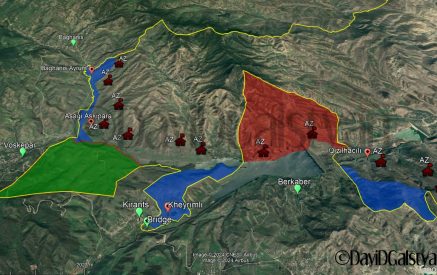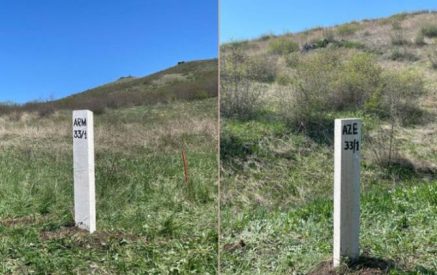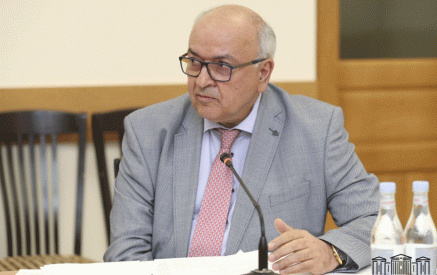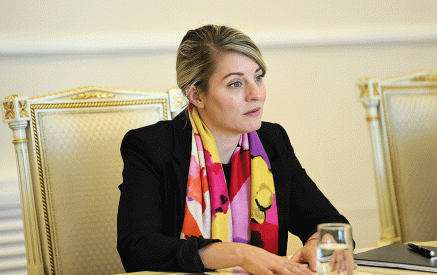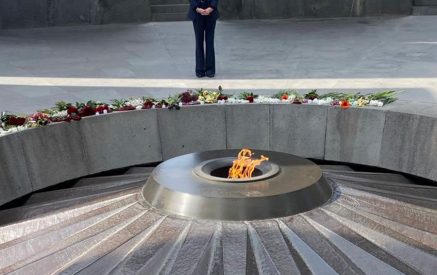Interestingly, two places with heavy Armenian populations, Yerevan and Glendale are the loci and foci of rising power generation debates. Glendale’s timeline is one of several months while Yerevan’s is not clear cut, but further out.
The “Jewel City” wants to build a new, natural gas (methane, CH4) fired, electricity generating facility at its Grayson location. The stated aim is to replace four smaller, old, gas plants that run on technology that is much less efficient and more polluting. On the face of it, this seems to make a lot of sense.
But, as always, there’s more to the picture. The new plant would significantly increase the city’s generating capacity to a level far beyond its projected electricity needs (almost 80% more by one estimate). Plus the fuel used is one which is on its way out. California law requires that by 2030, 50% of electricity be generated from renewable sources, meaning solar, wind, hydropower, etc. A bill was proposed this year which would have raised that threshold to 100% by 2045. While it didn’t pass in the legislature and get signed by the governor this time, no one doubts that it will be reintroduced and enacted into law in the very near future. Hawaii already has set its 100% renewable target.
Where would the new status quo leave that brand–new, $500 million plant? No one can say for sure. Surely Glendale’s leadership is not clueless. Why embark on such a path? The underlying reason is the city’s finances. Cash is badly needed and the significant excess electricity produced would be sold. At least that’s what the unstated hope and intent seem to be. “But, but, but…” you’re probably thinking, “who would buy electricity from a non-renewable source once that 100% renewable mandate is place?” And, it gets worse. California has done so well building renewable generating capacity that in recent months it has already been forced to give away electricity during days when lots of solar and wind power was generated, creating a glut of power. In fact, on a few occasions, Californians even had to PAY other states to take the excess. In case you’re not aware, Glendale is in California.
Add to all this that the new Grayson plant will be spewing greenhouse gas (carbon dioxide, CO2) and unavoidably some other pollutants. So Glendalians will be socked twice, in the wallet and the lungs, while their neighbors in Burbank, Los Angeles, and Pasadena will bear the toxic burden with them. And, in case that’s not enough “dirt” for you, the project site has a known, major, asbestos problem, plus several feet of soil will have to be removed in what is an EPA designated Superfund site (this is the type of place that is so polluted that tens or hundreds of millions of dollars must be spent to clean up)!
You can speak up against this by going to https://stopgrayson.com/ to make comments about the EIR (Environmental Impact Report) of the Grayson project. The deadline to do so is 5:00 pm on November 3.
Meanwhile, Yerevan is considering building a new nuclear power plant to replace the aging (41-year old) Medzamor/Metzamor facility. As it stands, restarting Medzamor after it was shut down during the Karabakh movement was tolerable only because of the absence of alternatives and the desperate need for power. A new nuke, while probably better designed (the current one is like the Chernobyl plant that had its meltdown in 1986), would still be sitting atop the Armenian Highland’s many earthquake faults. It would still make an appetizing bombing target for our genocidal eastern and western neighbors. It would take years to build. And, perhaps “best” of all, would run in excess of $5 billion!
Five billion dollars! If we can get that kind of money, it would buy a lot of solar panels and/or windmills. That would be a much better way to satisfy our homeland’s energy needs. It would not be subject to earthquakes, meltdowns, or Turks. Solar and wind generated electricity would be more distributed, reducing transmission losses. An industry installing and maintaining them could burgeon. While a long shot, perhaps local manufacturing of solar panels and or windmills might be created which could then engage in exporting their products to neighboring countries.
One figure I found online puts Medzamor’s annual output at 2,265 GW·h (gigawatt hours). So I decided to do some math for comparison. A 12 kW solar system, in Los Angeles, after the city’s Department of Water and Power rebate, costs $25,788. Given labor cost differences, I think it is reasonable to assume that the same setup in the Republic of Armenia is not going to cost any more. Assuming that only two hundred days per year are sunny, and only for six hours per day, then it would cost $4,056,237,500, i.e. just over four billion dollars to install as much solar electric generating capacity as the current nuclear power plant. That’s only 80% of the replacement cost of the nuclear power plant, and remember, labor costs will be lower, meaning even more capacity could be installed. In fairness, I should note that at least initially, getting solar panels to Armenia may be costly.
Once again, we must engage in heavy advocacy and lobbying work to drive policy makers in Yerevan towards the environmentally, technologically, and national-security-wise preferable electricity generating options. Our homeland’s future depends on it. Get busy talking this up with your contacts in the Republic of Armenia, and while you’re at it, don’t forget Glendale’s potential boondoggle.




